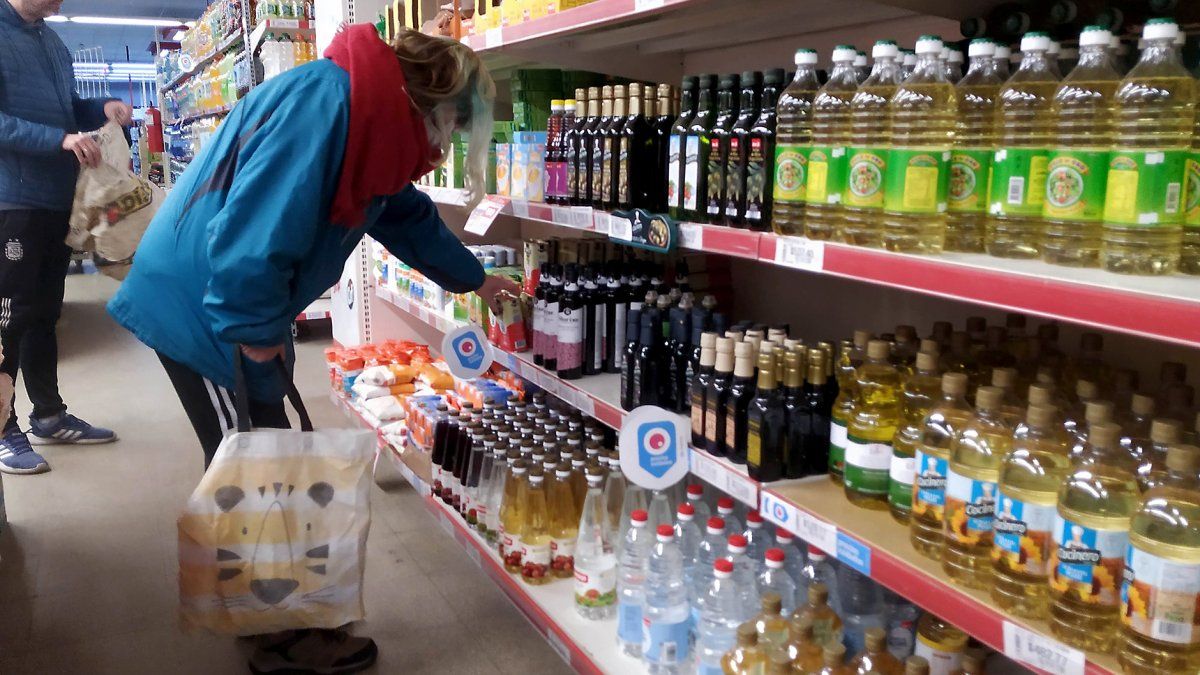But, perhaps the most striking fact is drop in food consumption: according to the report, this item fell 6.8% year-on-yearwhile beverages contracted 0.6%, personal care items 8.2% and cleaning products 1.5%.
“Argentina will have inflation close to 85% year-on-year in September. The macroeconomy is not balanced, but contained, and the microeconomy is not contained, but unbalanced. The purchasing power of Argentines is pulverized day by day”, said Damián Di Pace, director of Focus Market, who in this regard detailed: “The large stores, where Argentines get ‘cared for’ reference prices, beat the small formats. Today everyone loses: the stock of those who produce, the cash of those who sell, the pockets of those who buy“.
“Consumption is the engine of the economy and trade its main support. While retail sales fell 3.5% according to the CAME in September, in traditional multi-item retail stores in mass consumption the situation is not better. This was reflected in the INDEC data on indigence, where the number of Argentines who do not complete a food basket is growing,” the analyst remarked.
The impact is greater in the metropolitan area than in the cities in the interior of the country. In fact, as the study highlights, mass consumption in the metropolitan region accumulated a fall of 10.5% in the first nine months of the year. In the rest of the country, the decline was “barely” 0.7%.
The drop in food during September occurred in a month in which, according to private surveys, this item grew above the general level of inflation. A reality that, they anticipate, would be observed again during October.
In fact, as Eugenio Marí, Chief Economist of the Fundación Libertad y Progreso, pointed out to Ámbito: “October is shaping up to be another month of monthly inflation of around 7%, as were July, August and September. NOur measurement for the first week of the month gives us a general inflation of 4.5% and food inflation of 5.3%. Both data are slightly above those recorded in the same period in September.
Consumption habits
In this sense, according to a survey carried out by the firm ShoApp, some peculiarities are observed in the consumption habits of Argentines. In a survey, the firm inquired what purchase channels choose to provide themselves with mass consumption products such as food, beverages, personal hygiene and cleaning.
“Contrary to what we might think in a context of inflation and high uncertainty, 2 out of 3 consumers choose to make purchases with several trips to the point of sale, and little volume in each purchase. This format is especially popular in low socioeconomic levels, and in adults between 30 and 49 years old. On the contrary, high socioeconomic levels and young people from 18 to 29, mostly choose high-volume purchases, with fewer trips to the point of sale”, the study noted.
When asked why this purchase method is chosen in a context of high inflation, the answer was: “The notion that ‘this way you spend less, or you control spending better’, is the reason given by 50% of people who choose this way of supplying themselves”.
“We know that consumers choose the shopping channel primarily on price, but what does it mean to choose a channel by price? Offers are the main variable, followed by bank promotions. These two variables group more than 70% of the reasons for choice behind the price, and explain why the organized channel so effectively captures the purchasing strategies of Argentines in a context of strong adjustment”, concluded the study.
Source: Ambito
David William is a talented author who has made a name for himself in the world of writing. He is a professional author who writes on a wide range of topics, from general interest to opinion news. David is currently working as a writer at 24 hours worlds where he brings his unique perspective and in-depth research to his articles, making them both informative and engaging.




